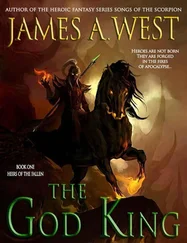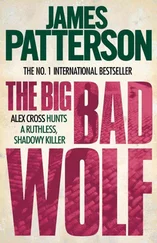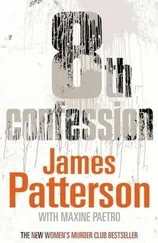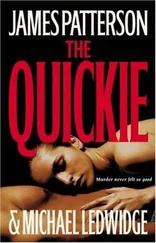As Carter took a greedy swallow, another local man slipped a long, double-breasted overcoat around Carter’s shoulders. This might have given the young Englishman an air of casual elegance were it not for the fact that onlookers swore he looked like a ghost.
He was, in truth, thoroughly exhausted, having spent most of the night sleeping outside on the hard ground.
At 4:00 a.m. he left a pair of men to stand guard, then went inside to prepare for the great unveiling-draping electric lights, placing beams over the deep wells, hanging rope ladders and handrails, and constructing wooden walkways so his eighteen guests wouldn’t destroy fragile archaeological items.
Howard Carter had finally found his tomb.
Tuthmosis IV was the eighth monarch of Egypt ’s Eighteenth Dynasty. He reigned from 1401 to 1391 BC and was the father of Amenhotep the Magnificent and the grandfather of Akhenaten. His body was sealed inside a stupendous tomb in the southeast corner of the Valley of the Kings. Elaborate pains had obviously been taken to hide the burial site, including a location several hundred yards away from any other dead pharaoh.
Tuthmosis IV had deliberately chosen the most desolate, distant spot possible. Not only did he wish to be buried for all eternity, but he also wanted to stay hidden.
Nevertheless, seventy-nine years after his death, tomb robbers found him.
On January 17, 1903, so did Howard Carter.
Tuthmosis IV was KV 43.
This was the first great find of Carter’s career.
He’d had to wait two weeks for his patron, Theodore Davis, to return from a boat trip upriver to Aswan. Now Carter would lead yet another tour, only this time it would be to a tomb that he had discovered.
Davis had purchased an exclusive valley concession in 1902 and immediately hired Carter to lead the excavation. That first season had been inconclusive, with Carter discovering only the tomb of a minor noble and a box containing two leather loincloths.
For the 1903 season, Carter chose to excavate a small, forgotten valley within the valley. In days his men had uncovered a tomb entrance, complete with small vessels embedded in the rock, which the Egyptians believed held magical powers.
He led the large group into that opening now.
The path descended quickly. One heavyset functionary had comical difficulty wriggling through a particularly narrow passage into the deeper reaches of the tomb, and Carter had to pull him through. By now Carter was working mostly on adrenaline, proud of his discovery even as he delivered a clipped monologue about the tomb’s contents: the war chariot, the sarcophagus, the mass of beautiful debris strewn about the burial chamber-no doubt by the tomb robbers.
The air was rank, and Carter would have to bring in fans and run lines of air from the outside as the excavation continued. But for now it was plenty good enough. As he escorted the satisfied group back up the steep passage to the main entrance, Carter’s workday was done. He felt a little like a god himself.
Tea and a lunch awaited, served atop white tablecloths. The group, clearly awed by what they’d just seen, celebrated Carter and Davis as they dined.
Carter deflected the praise onto his egomaniacal boss, who was beginning to see himself not just as a benefactor but as an Egyptologist in his own right. There were plenty of accolades to go around, and everyone proclaimed what a successful dig season this was going to be.
“All praise goes to Mr. Davis!” said Howard Carter, believing not a word of it.
All praise goes to me, and perhaps to Tuthmosis IV, he thought.
Valley of the Kings
February 12, 1904
CARTER COULD BARELY BREATHE, and poor Percy Newberry was about to pass out from the bad air, but their goal was within reach, and they soldiered onward into the most recently discovered burial chamber.
The subtext of this great moment was that Howard Carter had done it again. It was almost unbelievable, but just a few weeks after finding the tomb of Tuthmosis IV, he’d unearthed another tomb on the same side of the valley. Inside was a mummy in a coffin.
The dead man’s identity was unknown thus far, but Carter had made an amazing find. Not long before, he had come across evidence of Hatshepsut’s burial place. The female pharaoh’s temple on the other side of the mountain was perfectly aligned with this latest tomb. To Carter’s way of thinking, it was possible, even likely, that a tunnel connected them.
“I do not hope for an untouched tomb,” he had written Edouard Naville, alluding to every Egyptologist’s prayer of finding a virgin burial chamber. “Rainwater will be a great enemy, but hope for the best.”
Carter was certainly right about the rainwater. The storms that wiped the hillsides clean of debris had sent chunks of rock and sand into tomb openings where they had hardened like cement. Since mid-October his workmen had swung pickaxes in the tomb corridors, clearing out the compacted earth.
Bits of pottery and other funerary debris had been found in the dirt, keeping alive Carter’s hopes that the elusive mummy of Hatshepsut might be buried here. Finding it could be the highlight of his career and make Howard Carter famous around the world.
Finally, after four months, the workers had reached the burial chamber. Percy Newberry and Carter pulled down the mud-and-stone blocking that formed the chamber’s doorway. Then both men entered.
A wave of dank, noxious air washed over them as the hole widened. Several steps inside, Newberry couldn’t take it anymore.
He pleaded with Carter to follow, then staggered back toward the light. But Carter pushed onward. How could he not? He had worked thirteen long, hard years for this day, this discovery.
The heat and dank air conspired against him. Every stitch of his clothing was drenched in sweat, and he gasped for each breath.
The tomb, as he had predicted, was not untouched. Inside was an empty sarcophagus, a canopic jar, and broken vases bearing the names of Hatshepsut and her father.
They were items of historical interest, nothing more.
And more is what he wanted.
Howard Carter would no longer be satisfied with simply locating tombs. Now he wanted tombs of significance, untouched throughout history, and he especially wanted the great treasures buried with every pharaoh.
Carter “emerged from the tomb,” wrote a friend of Theodore Davis’s, “a horrid object, dripping and wet, with a black dust over his face and hands-he was very sick, too, and had to lie down for some time.”
But the very next day, Carter was back at work, searching for that elusive virgin tomb that would make him a household name.
Maybe it would be Hatshepsut.
Or perhaps another pharaoh of even greater importance.
The treasure hunt continued, and, in truth, it became Howard Carter’s whole life.
Amarna
1335 BC
NEFERTITI WEPT as she had never wept before.
“Aye!” she finally yelled. “Bring me Aye. I need him right this minute. Now!”
The royal scribe came running into the pharaoh’s bedroom. Nefertiti was slumped at the foot of the bed, her supple frame hidden in an elaborate robe. The pharaoh lay on his back, unclothed, covered only by a scrap of bedsheet Nefertiti had laid across his lower body.
“He’s dead,” Nefertiti said before Aye could utter a word.
Their eyes locked, and in that brief exchange, in the fire of Nefertiti’s eyes, the power in the royal palace shifted inexorably in the new widow’s favor. She was no longer the wife of the pharaoh but ruler of all of Egypt. She was divine. And Aye was still just the scribe-that is, if she allowed him to live.
Aye cleared his throat. “What happened?”
Читать дальше












